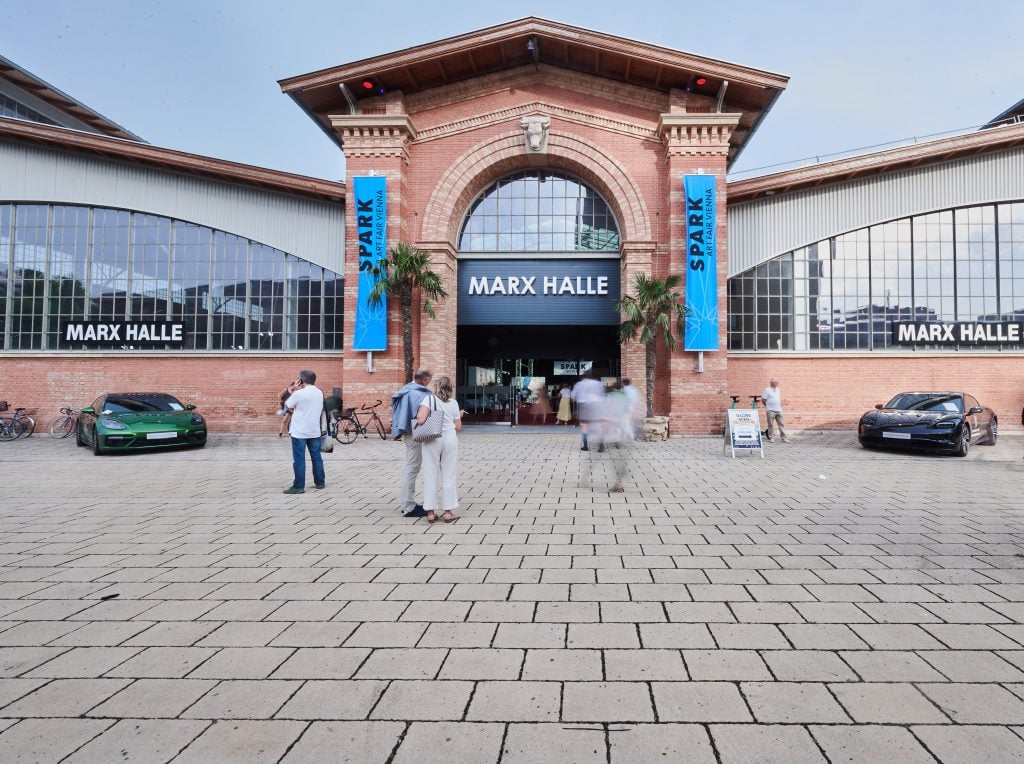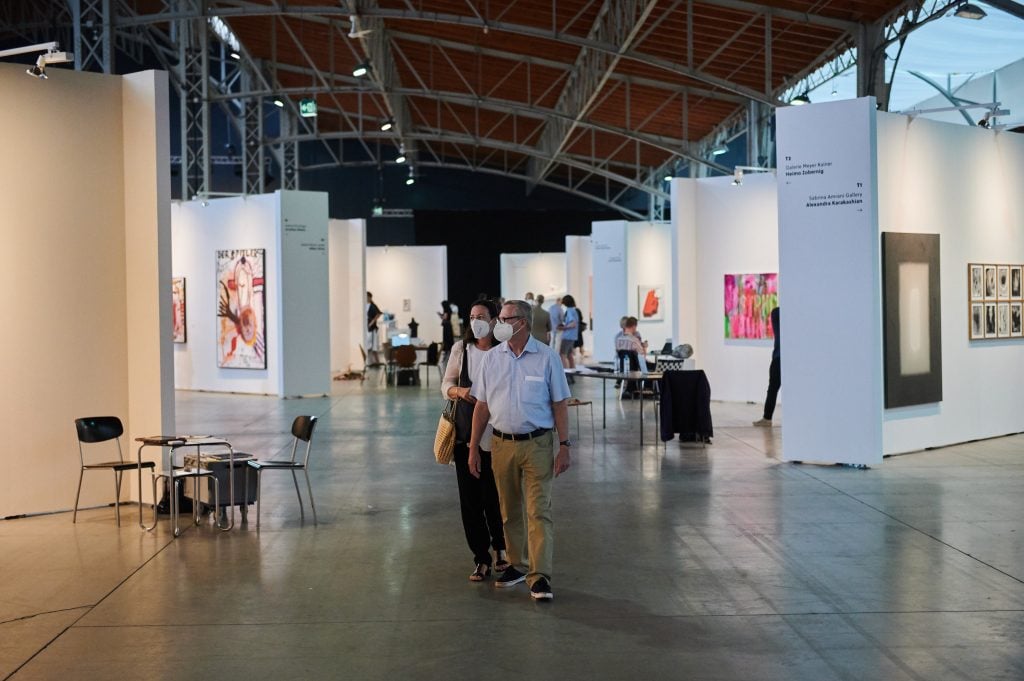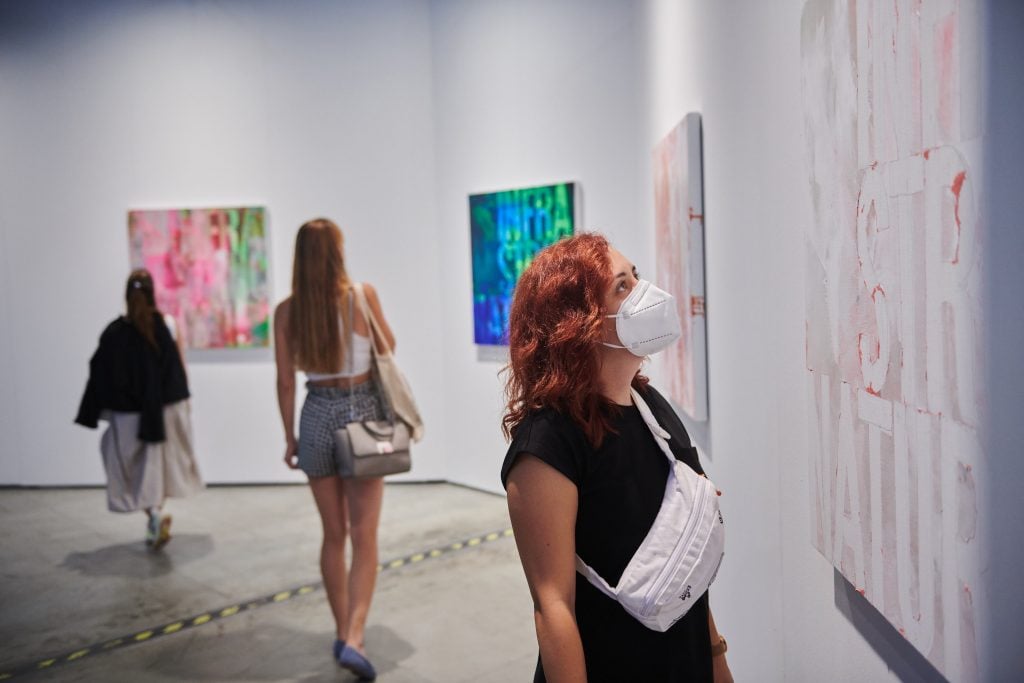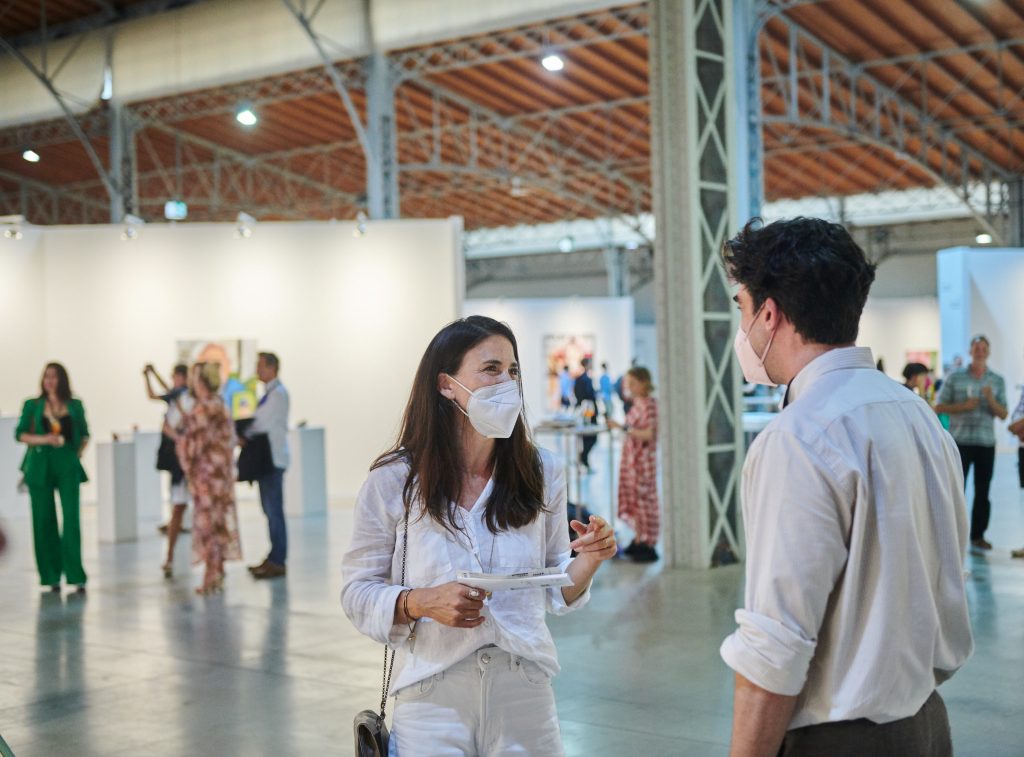Artnet News Pro
A Buzzy New Art Fair Has Taken Vienna by Storm. Could It Supplant the City’s More Established Predecessor?
Is the city's market strong enough to support competing events?

Is the city's market strong enough to support competing events?

Kimberly Bradley

To paraphrase an old joke attributed to composer Gustav Mahler, if the world ended tomorrow, it’s best to go to Vienna, since everything there is 50 years behind. Every once in a while, however, the city’s art scene comes up with something innovative. And Spark, Vienna’s new art fair, which took place from June 24 through 27, just might be one of those things.
The event’s first edition, held in the immediate wake of not-quite-post-COVID reopenings and looser regulations in Central Europe, featured a tight edit from 60-odd galleries and relevant, curated sections. It also represented a bold step toward rethinking what an art fair in Vienna, or beyond, could be and do.
Within the region, Spark evokes some déjà vu: six years ago, the Austrian capital’s long-running Viennafair rebranded as Viennacontemporary and moved from the city’s fairgrounds to the wrought-iron Marx-Halle, a former cattle market in an emerging industrial zone in Vienna’s third district, a still-fledgling creative hub. Spark, too, takes place in the Marx-Halle, and its initiator and director Renger van den Heuvel was Viennafair and then Viennacontemporary’s managing director until 2019.
The new fair’s concept is reminiscent of Art Berlin Contemporary, which ran in the German capital from 2008 to 2016 and had galleries mount solo presentations, as Spark does now.
The majority of Vienna’s leading galleries—Krinzinger, nächst St. Stephan, Sophie Tappeiner, and Georg Kargl, to name just a few—showed up, as did a smattering of galleries from the wider region, including Johann König, PSM, and KOW from Berlin; Soda from Slovakia; Kisterem from Hungary; and Jezca Gallery from Romania. Because of ongoing restrictions, Italian and Swiss galleries had a hard time participating, according to van den Heuvel.

Kurt Prinz/SPARK Art Fair Vienna.
Yet there was plenty that was different at Spark, the most obvious being its airy layout. Instead of boxy booths, an arrangement of large X’s allowed exhibitors to peruse two long diagonal walls that opened broadly toward the aisles. The effect was generous and almost museal, but it was also conducive to social distancing. (The strict entrance squad did not check for VIP passes but rather proof of compliance to Austria’s current “3G” rule: geimpft, getestet, oder genesen, which means vaccinated, tested, or recovered.)
“The layout is absolutely democratic,” gallerist Henrikke Nielsen of Croy Nielsen pointed out on preview day. “Every exhibition area is exactly the same size.” Low exhibitor fees (a base fee of €200 per square meter was in many cases offset by outside funding; many booths cost €2500 to €3500 all in) made attending a low-risk investment for galleries.
More abstractly, Spark seemed to be less about the frenzied commerce that dominated the pre-pandemic art circuit and more about, well, art. (Overblown VIP groups and ancillary events like panel discussions were notably absent.) Spark was invite-only this year, largely hosting a core of Viennese galleries, while the curated sections meandered more internationally.
Van den Heuvel collaborated with three well-known institutional curators for Spark’s curated sections. “Utopia: Postwar” was organized by Sabine Breitwieser, the former director of the Museum der Moderne in Salzburg. Her section included work by mainly female artists like Nan Goldin, Maria Lassnig, and Marina Abramović, as well as a wonderful display by Nancy Spero and a striking new installation by Anna Boghiguian.
Vienna MAK curator Marlies Wirth’s digital art section addressed art’s current obsession with NFTs and included presentations by Jonas Lund (whose exhibit traced a cryptocurrency based on his work), Oliver Laric, and more. Meanwhile, Croatia-based curator Tevz Logar’s “Perspectives” segment featured primarily European artists whose works pondered the meaning of artistic production.

Kurt Prinz/SPARK Art Fair Vienna.
Spark may be small—but it’s also ambitious. It recognizes the art market is at a pivotal moment where regional markets have the chance to thrive.
“So much has changed in the past 15 months,” said van den Heuvel. “Galleries were forced to focus on their core market, and they started to understand its potential. They’re looking for different formats.”
Indeed, Spark isn’t the only new experiment. In January, a dozen local gallerists organized Interconti Wien, in which they mounted one-person exhibitions in glass vitrines in an empty Intercontinental Hotel and experimented with digital exhibition methods beyond online viewing rooms.
By Sunday, some results for Spark were in: Dutch gallery Dürst Britt & Mayhew sold five works by Jacqueline de Jong to a female collector from Vienna at €15,000 ($17,890) each. Ulysses, a Viennese gallery that rarely participates in local fairs, sold a Maria Lassnig for €54,000 ($64,000) and a work by Agnes Denes for more than €20,000 ($24,000).
Georg Kargl Fine Arts nearly sold out its presentation of an installation and two-dimensional pieces by gender-bending artist Jakob Lena Knebl, who will represent Austria at the Venice Biennale next year, at prices ranging from €2,200 to €12,000 ($2,600 to $14,300).

Kurt Prinz/SPARK Art Fair Vienna.
What might Spark mean for Vienna’s art-market ecosystem? Can the region support two similarly scaled art fairs, or is this a replay of what happened six years ago, when Viennafair quickly disappeared after Viennacontemporary was established?
The jury is still out. Spark has secured its late-March slot and location until 2024, while Viennacontemporary has moved to early September (its old late-September timing was offset by a postponed Art Basel in Basel). Chaired by Russian patron and entrepreneur Dmitry Aksenov, Viennacontemporary is currently without an artistic director after he and Johanna Chromik parted ways in late 2020 and Markus Huber, managing director of Viennacontemporary, confirmed that the fair will no longer take place at the Marx-Halle.
Huber also said that a new experimental format is in the works in a new venue. “We still see ourselves as the international fair,” he said. And many dealers I spoke to, such as Nikolaus Oberhuber from Berlin’s KOW gallery and a Viennacontemporary committee member, assured their participation and support.
At the moment, there’s a wait-and-see vibe. Maybe, instead of the competitive undercurrent that often flows through the Viennese art scene, there could be room for both. Even if the fair never seemed packed, local private and corporate collectors showed up—some to buy, others out of curiosity.
“Spark and Viennacontemporary can coexist,” van den Heuvel said. “Giving impulse to the home market? You can do that twice a year.”
Spark will stay small, solo, and will not focus on eastern European art, which is Viennacontemporary’s unique selling proposition. Van den Heuvel’s plan is to establish a 50/50 balance between international and Austrian galleries, but also to develop more in the city through permanent art spaces or co-productions of new works. “I could not have imagined this concept three or four years ago, but now it caters to a need,” he said.
In the fair’s main aisle, a huge, colorful Lawrence Wiener text piece at Vienna’s Galerie Hubert Winter read: “Spark to Flame.” To be sure, the spark is there—let’s see if it catches fire.